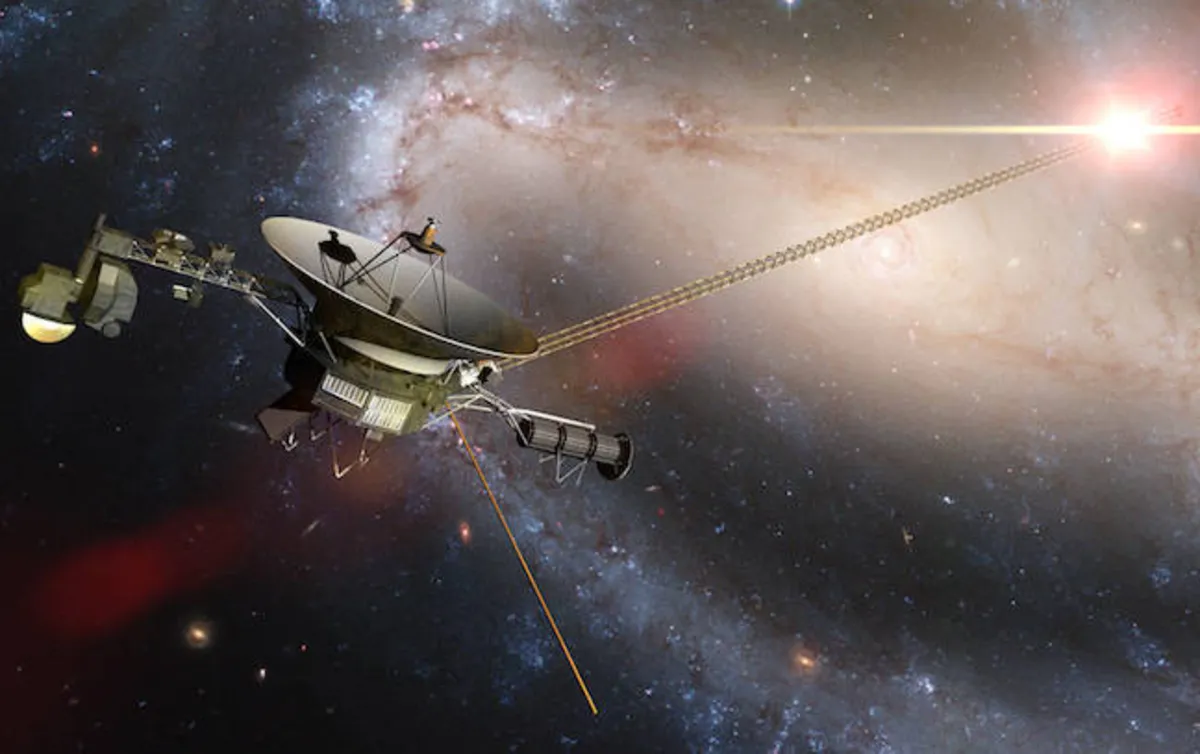
NASA has achieved a remarkable milestone by reviving a set of thrusters on the nearly 50-year-old Voyager 1 spacecraft. After declaring these thrusters inoperable more than two decades ago, this engineering success represents a significant win for the team at NASA's Jet Propulsion Laboratory (JPL). The revival was critical, particularly as the backup thrusters were at risk due to clogging fuel lines, which could have jeopardized the spacecraft's operations.
Launched in 1977, Voyager 1 has far exceeded its original mission plan, traveling over 15.6 billion miles away and beyond the reach of any telescope. JPL reported that the maneuver, completed in March, successfully restarted Voyager 1's primary roll thrusters. These thrusters are essential for maintaining the spacecraft's alignment with a tracking star, which helps keep its high-gain antenna pointed towards Earth.
The primary roll thrusters stopped functioning in 2004 after a pair of internal heaters lost power. For years, Voyager engineers believed these thrusters were irreparably broken. Meanwhile, the backup thrusters in use were at risk due to residue buildup in their fuel lines, potentially leading to failure as early as this fall. If the roll thrusters failed entirely, Voyager 1 would lose its ability to remain properly oriented, risking a complete loss of contact.
Compounding the issue, the only antenna on Earth capable of sending commands to the Voyager probes—the 230-foot-wide DSS-43 dish in Australia—is currently undergoing an upgrade shutdown until February. This means that there are only a couple of brief operational windows in August and December for sending commands to the spacecraft, which are still the most distant human-made objects in existence.
Faced with a pressing deadline, the Voyager team had limited options. They decided to explore the possibility of reviving the primary roll thrusters that had failed in 2004, based on a condition that the heaters might still be operational due to a circuit disturbance. The plan was to restore power to the heater, allowing Voyager 1 to drift far enough from its guide star so that its onboard system could automatically activate the thrusters to correct its course.
However, this plan came with risks. If the heaters were indeed off when the dormant thrusters activated due to attitude drift, it could trigger a small explosion. Given that it takes over 23 hours for a radio signal to travel from Voyager back to Earth, the team would have to wait a full day to know if their efforts were successful.
Fortunately, when the return signal finally arrived, the Voyager team discovered that the thruster heaters were back online, marking a successful revival. This achievement was unexpected, as the thrusters had been deemed non-functional. Todd Barber, the Voyager mission propulsion leader, noted that this insight from one of the engineers was critical to finding a fix for a problem that had seemed insurmountable.
The Voyager missions have encountered numerous challenges since their departure from Earth over 47 years ago. Recently, Voyager 1 returned gibberish instead of usable data for several months before the issue was resolved. Both probes have had to shut down scientific instruments as power dwindles and systems fail. Despite these obstacles, Voyager 1 continues to operate at the edge of interstellar space, demonstrating resilience in its long journey.
Ultimately, both Voyager spacecraft will eventually go dark, closing our most distant eye into the universe beyond our solar system. But for now, thanks to the ingenuity and perseverance of the NASA team, the journey continues.